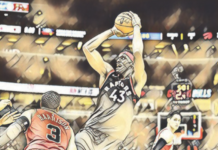Themuseum will be opening their Underground Studio with MakerSpace programming to the public in 2016. MakerSpace will teach youth in the region skills such as soldering through experience-based activities.</p>
The MakerSpace programming will encourage makers of all ages to apply science, technology, engineering, arts, and math (STEAM) to their work. When asked to comment on their derailment off the STEM path, David Marskell, CEO of Themuseum, commented, “The arts portion is very important to us — the whole notion was art and technology at play.”
Imprint met with Brent Wettlaufer, senior interpreter, and Vanessa Moniz, teacher-in-residence at Themuseum, to discuss their creation and implementation of MakerSpace. The two explained that they are currently trying to source the necessary components and will be adding on new activities in the future. With a visual arts background, Moniz is highly conducive to the arts component, while Wettlaufer bring his physics background to the table; they hope to produce activities that will keep kids interested.
Inspiration for this programming came from the realization that there is a need for and growing culture of makers in the region. “We have a lot of young children that make their way into the space and want to interact with things differently,” commented Wettlaufer.
Moniz added on that “these kids are capable of so much creativity, and it’s the first permanent youth maker space in the region. It’s a great opportunity for younger visitors to co-construct things and use our MakerSpace and the materials available to them to think creatively and design great things together. We have to teach youth these skills because we live in a community that’s full of tech and design — it’s full of ideas coming together and innovation and it’s all STEAM based.”
To ensure growth in all those attending the programming, different activities will be available for youths aged six to 17. One of the activities may be a simple project that involves skills like soldering on a breadboard. A six-year-old may be able to combine all the components together and have someone assist with the soldering, but a 12-year-old will be able to solder himself. All activities will be scalable to the age range. The older attendants will also have the opportunity to become mentors and leaders to the younger makers.
One of the goals of MakerSpace is to give youth the knowledge and tools needed to pursue careers in the STEAM path. Wettlaufer commented, “We are looking for champions and stewards of the maker community to participate actively in MakerSpace. One of our hopes is to be able to form partnerships with existing makers in the Waterloo region — we want to act as a platform to bring these professionals and other experts in to expose to youth.”
Themuseum already has maker events, including MakerExpo which occured Sept. 18, where they bring in professionals and makers to demonstrate their innovations and explain why they are passionate about technology. Moniz said, “It’s to inspire young minds and see the potential in STEM and how it is all around us.” They hope to expand this into the MakerSpace programming and have makers-in-residence.
When asked about the process of creating the Underground Studio and MakerSpace, Wettlaufer explained that they spent a lot of time doing due diligence and research to see what the community needs and what other communities have done on a regional and international level. “We spent a lot of time researching what types of objects we may require and what the future of making might resemble, whether it is additive manufacturing methods or subtractive ones. There’s a lot of different elements that go into something like this.”
They’ve spent the last several months looking at this phase; the next phase will be the constructing of the space and getting the materials ready. This includes adding a twist to the Ontario curriculum to allow makers to animate the space to the highest degree.
“This is where it all starts — if we can get one little girl interested in this who goes through high school and chooses to stay at one of the universities, and hopefully they can come out to the Velocity program or the UW Accelerator Centre, maybe start a company at the Communitech hub and stay in the community,” said Marskell, “that would be a wonderful opportunity.”
Marskell closed the interview saying “It’s not just STEM, it’s in what art conveys too.”































